6 Arupadai Veedu Murugan Temples
The term Arupadai Veedu literally means Six Abodes of Murugan. These six abodes are sacred temples, dedicated to Lord Subrahmanya, the God of the Hindu religion. Such temples exist in the state of Tamil Nadu of India, and the state, as a whole, can be said to be an important one from Hindu religious as well as cultural perspectives.

Contents
Who is lord Murugan:
He is another name, Kartikeya, Skanda, Subrahmanya, or Shanmukha. In the Hindu tradition and the tradition of South India, he is one of the best gods. He is, therefore, generally believed to be the god of war, of victory, of wisdom and knowledge. His father was Lord Shiva, while his mother was Goddess Parvati, Lord Murugan.
According to Hindu mythology, the younger son of Siva and Parvathi is Subrahmanya who was born to finish the wicked demon Surapadman and save the gods and people. This boy has been known to be the child god. He is young and vigor. Six-headed and twelve-handed God can be drawn on painting, which symbolizes mastering of six kinds of senses. He can even do several jobs at the same time.
He has few symbols and attributes attributed to him. In one respect, he is traditionally pictured holding in his hand a spear or lance known as the Vel, embodying divine power and conquest of evil. Another way is by riding on the back of a peacock, his divine vehicle.
The people worship Lord Subrahmanya for protection, getting enlightenment, and also for getting success in all activities. His above-mentioned temples are sacred places of pilgrimage. The Skanda Shashti (The sixth day (tithi) of the lunar fortnight (paksha) in the Hindu calendar) is a six-day festival in the honor of Lord Murugan, and there is great enthusiasm in various parts of South India while celebrating this festival.
In other words, Lord Kartikeya is worshiped in other religions of the Indian subcontinent, such as Buddhism and Jainism, aside from being a god in Hinduism. He is indeed considered a god characterized by qualities such as bravery and spirituality.
The six temples of Arupadai Veedu are:
Thiruthani:
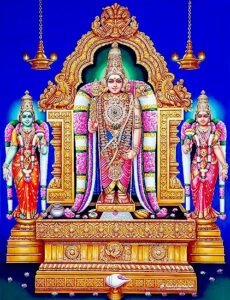
Thiruthani Temple is one of the most sacred temples in South India dedicated Lord Murugan, elder brother of Lord Ganesh and son of Lord Shiva and Goddess Parvati. Thiruthani Temple is based in the Indian state of Tamil Nadu, in the town of Thiruthani. It is one of the six sacred abodes of Lord Murugan, referred to as the Arupadai Veedu. Highly Important After conquering the great demon Tarakasura, it is believed that, in the guise of ending all battles and starting spiritual rest, Lord Murugan went to this shrine for resting and calm.
The temple is renowned for the peaceful and quiet ambiance provided by its surroundings to devotees climbing the 365 steps to the shrine. This number is symbolic as it represents the days in a year, therefore reiterating the existence of divine grace all along. During the Thai Poosam festival, the temple is full to capacity, as a great number of devotees turn up to seek blessings from them for mental peace, good health, and success.
This idol of Lord Murugan at Thiruthani is very peculiar in the sense that he is shown to be a silent and a tranquil god with a spear in his hand. It also is a very important shrine as it is considered to be the one that speaks about peace and enlightenment..
Palani:
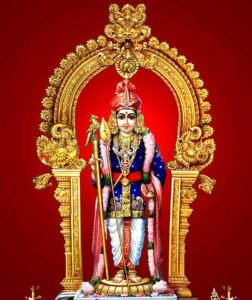
The Palani Temple is one of the most important and revered pilgrimage centers dedicated to Lord Murugan, a son of Lord Shiva and Goddess Parvati. It is one among the six sacred abodes known as the Arupadai Veedu. It is considered extremely auspicious for devotees praying for health, prosperity, and spiritual growth. It stands atop a hill at about 150 meters from the elevation and holds the most marvelous view of the countryside surrounding it.
What is truly unique and different about the Palani Temple is that the Lord Murugan idol, one of its most fantastic attributes, is made up of a combination of nine sacred herbs known as Navapashanam. This medicinal potion is supposed to have healing properties. The idol is often regarded as having therapeutic powers and is believed to attract hundreds of devotees seeking cure from physical and mental ailments. It has made the temple a popular destination for sick people or those seeking to recover from an illness.
Legend runs amok in the history of this temple. Myths believe that Lord Murugan, in a race of his brother Lord Ganesha to cover the circumference of the earth faster than him, preferred staying there at Palani rather than traveling, meaning the need for inner contentment and religious devotion over material success and achievement. He then used Palani as his heavenly abode.
Devotees visit the temple and climb a very steep flight of 693 steps to reach the sanctum, which symbolizes spiritual ascension and pursuit of divine wisdom. Millions of pilgrims visit the temple every year, especially during the grand festival of Thai Poosam, when elaborate rituals, processions, and offerings are made to Lord Murugan.
Palani can be described not just as a religious center but something that symbolizes devotion to healing and a spiritual course toward peace and enlightenment..
Swamimalai:

The Swamimalai Temple is one of the six sacred abodes of Lord Murugan, known as the Arupadai Veedu. It is situated near the town of Kumbakonam in Tamil Nadu. This temple is one of the most revered sites for people with respect to religion and culture and draws devotees from around the world. Swamimalai is unique in the sense that there is a legendary story that Lord Murugan, in childhood, taught the sacred Pranava Mantra (Om) to his father, Lord Shiva, which symbolizes that divine knowledge and wisdom will be passed on.
Temple is located on top of a hill, to reach the main shrine, devotees have to climb 60 steps, which symbolise the 60 Tamil years. The architecture of the temple is marvelous with intricate carvings and detailed sculptures of different legends from Hindu mythology. Swamimalai is dedicated to Lord Murugan in his role as the divine teacher and the idol of the deity here is represented in a seated posture holding his spear with his right hand raised as an expression of teaching.
It is not only the place of pilgrimage but is also an abode of wisdom and learning. The mythical account of the conferring of Pranava Mantra upon Lord Murugan illustrates that a man must understand his scriptures to have attained complete spiritual knowledge.
The temple also receives devotes during festivals like Thai Poosam and Skanda Sashti, where complex rituals, processions, and celebratory events are done. Swamimalai Temple also ensures a peaceful environment with great calmness that lets an individual reflect and devote oneself sincerely. For many people, this sacred site allows individuals to seek the grace of Lord Murugan with wisdom, spiritual progress, and protection.
Thiruparankundram:
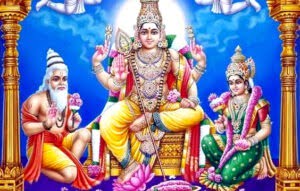
The Thiruparankundram Temple, situated just south of the city of Madurai in Tamil Nadu, happens to be one of the highly worshiped temples exclusively to Lord Murugan or more frequently termed as Kartikeya. Considered as one of the Arupadai Veedu– that is, six most revered houses of Muruga, it possesses quite vital religious and historical standing. On a hill sitting on an elevation of 1000 feet to boast its view on other ground surrounding it, the temple comes off spiritually attractive.
Thiruparankundram is special because it was believed to be the venue where Lord Murugan, after defeating the asura Soorapadman, married the daughter of the gods named Deivanai. This marriage symbolises the union of divine power and purity, and the shrine is often related to blissful harmony and marital success. The shrine is also known for its deep philosophical significance and for being one of the oldest Murugan temples in Tamil Nadu.
This grand temple houses variously carved sculptures describing the scenes of Hindu mythological stories with a beautiful blend of the Dravidian and rock-cut architecture. The temple deities portray Lord Murugan standing with six faces signifying his powers and twelve arms signifying numerous attributes. Several pilgrims visit this temple to collect blessings of good health, prosperity, and success.
This temple is an important site for devotees who seek divine protection and peace. During festivals such as Skanda Sashti and Thai Poosam, it hosts elaborate processions and rituals. The peaceful ambiance along with its history and cultural values makes this a prime spiritual centre for followers of Lord Murugan.
Pazhamudircholai:
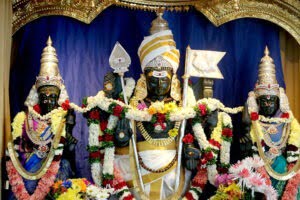
Pazhamudircholai Temple is one of the six holy abodes of Lord Murugan, known as the Arupadai Veedu, in the still hills of Alagar Mountain near Madurai, Tamil Nadu. It is devoted to Lord Murugan in his manifestation as “Senthil Andavar”. Pazhamudircholai Temple is also one of the most revered pilgrimages in South India. Pazhamudircholai, literally “the place where the fruit was offered,” is a reference to the mythological tale in which the mother Goddess Parvati offered Lord Murugan a special fruit, symbolizing divine offerings of wisdom and enlightenment.
It is sitting on a hill, encompassed by lush forests and sceneries surrounding the temple. This is hence a peaceful center for any worship and reflection. A pilgrim going to the main temple from winding roads and climbing the few steps makes it transcend as a place of spiritual ascendancy and closeness towards the divine. The sculpture and carvings represent the style of Dravidian architecture and narrate various stories of Hinduism.
The myth says that Lord Murugan used to live here and protect this region from demons and evil powers. This temple is also famous as the place where Murugan, on the request of the sage Narada, blessed his devotees with peace and prosperity. It is said that people who visit Pazhamudircholai can have divine blessings for spiritual growth, protection, and success in life.
Thousands of devotees flock this temple mainly during the festivities of Thai Poosam and Skanda Sashti. It also has direct affiliations to the classic Tamil literature of Kandapuranam. So it earns much cultural as well as spiritual value within the premises of Tamil Nadu. Pazhamudircholai is the most important sacred pilgrim place because of its peace as well as godliness that serves to attain Lord Murugan’s benevolent sight for a follower.
Thiruchendur:
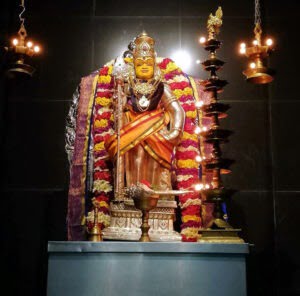
Thiruchendur Temple: Southern coast of Tamil Nadu-the most sacred of temples associated with the Godhead who is the son of Lord Shiva and his wife Parvati; it falls in the group of Six Sacred Abodes called the Arupadai Veedu. Thiruchendur is special not only because of its religious importance but also because of its stunning location along the shores of the Bay of Bengal, hence one of the few temples of Lord Murugan built by the sea.
The temple is said to be the place where Lord Murugan fought and defeated the demon called Surapadman, which is the sign of good triumphing over evil. According to the lore, after winning the fight, Lord Murugan made this place his abode and built the temple to mark that victorious moment. The ambiance of the temple with its peaceful surroundings and the soothing beats of the ocean waves together creates a spiritually charged space that attracts thousands of people every year.
The temple’s architecture is a blend of traditional Dravidian style and coastal influence, with beautiful gopurams (towers) and intricately carved sculptures depicting various gods, goddesses, and mythological stories. The sanctum sanctorum houses a magnificent idol of Lord Murugan, depicted in his warrior form, holding his divine spear, Vel.
This festival holds special importance when the devotees of Thai Poosam and Skanda Sashti come to pray in the temple, offer puja, perform rituals, and participate in processions. The temple has special ceremonies, including the grand processions like Kavadi Attam, where the devotee performs a ritual dance expressing devotion.
It symbolizes a house of worship but also depicts strength, victory, and protection of the divine to the devotees.
You may also like to check other temples:
Kanipakam Varasiddhi Vinayaka Swamy,
Tirumala Tirupati Venkateswara Swamy,
Twelve Sacred Jyotirlingas of Lord Shiva and
Shakti Peethas: The Power of Shakti.
The story of the six faces of Murugan:
An interesting story unfolds about the six faces of Lord Murugan in his mythology. It is told that once, there was a galactic event known as the “Tarakasura Vadham,” or the slaughter of the demon Tarakasura. The Gods approached Lord Shiva and Goddess Parvati, asking them to beget for them a great warrior with the power to slay the demon.
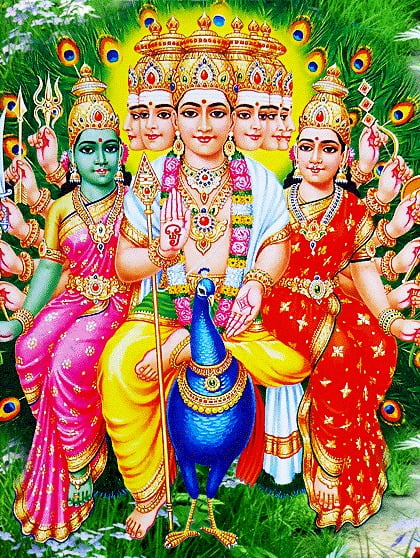
Then Lord Shiva and Goddess Parvati came into contact through their prayer and together used their divine energies to emit a spark that flew off from the conjunction. Then the six pieces broke apart, which was shared equally amongst the six Krittikas. Krittikas are also called as celestial nymphs that care for the child.
Every Krittika nurtured and raised one of Lord Murugan’s countenance, and for that, he gained six faces. His faces are regarded to be symbolic of some of his person and powers. Total six faces, as that of Lord Subrahmanya are there.
Primary Face of Lord Murugan
This primary face is used to talk about Lord Murugan’s divine beauty and effulgence. It pictures the elegance and beautiful attraction that reflects him.
The face of the divine bull represents Lord Murugan’s association with the animal kingdom and his role as the protector of animals. The face of the Chandra, or moon, represents his association with the celestial realm and his role as the ruler of time.
The face of Lord Murugan’s Surya, the sun, denotes his association with light, energy, and power. It symbolizes power for dispelling darkness and ignorance.
The face of Lord Murugan’s Agni, the fire, symbolizes his association with purification and transformation. It represents burning away negativity and purification of the soul.
The face of Lord Murugan’s Vayu is the image of his association with movement, swiftness, and freedom since it depicts the ability of the wind to move very speedily through thick obstacles.
The essence of Lord Murugan is that every face exhibits uniqueness and powers. Thus, he is the multibodied god who symbolises his divine existence as a god who could come as different aspects for fulfilling diversified reasons. The six faces in Lord Kartikeya depict his divine features, which signify that he covers everything.
